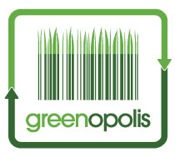Top 10 Materials To Recycle That Matter More For Climate Change
Top 10 Materials To Recycle That Matter More For Climate Change
A new report, “Reducing Greenhouse Gas Emissions through Recycling and Composting,” produced by the West Coast Climate and Materials Management Forum, an EPA-led partnership of western city, county, state, and tribal governments, identifies the top ten materials in California, Oregon, and Washington with the greatest potential for reducing greenhouse gas (GHG) emissions if they are recycled and/or composted. These fall into four priority material categories : carpet, core recyclables, lumber, and food scraps.
The laws of physics don’t change much from state to state, so this report will probably be relevant to where you live, too. This report states that strides can be can be made by diverting greater quantities of materials currently recycled or composted, and by establishing new programs for materials such as carpet and dimensional lumber.
The report identifies ten materials, broken into four priority materials. Types with the greatest emissions reduction potential were:
-
Carpet
-
Food Scraps
-
Core Recyclables:
-
Corrugated containers
-
Office paper
-
Aluminum cans
-
Newspaper
-
Magazines
-
PET and HDPE (or mixed plastics)
-
Steel cans
-
Dimensional Lumber
Carpet and food scraps had the highest potential, carpet because of the energy embedded in its manufacture,(Interface carpet founder Ray Anderson once told me that 2/3rds of the petroleum used to make carpet was in the form of energy), and food scraps by sheer volume.
A lot of the GHG emissions avoided by recycling/composting in the 3 study states are from resource extraction, manufacturing and transportation associated with the materials used and discarded, often in other states of countries.
Diversion of food scraps from landfills to composting offered the greatest quantity of in-state GHG emissions reductions. Food scraps are responsible for a large share of methane emissions generated by landfills. Which is why WM both captures that methane for fuel and why WM is investing heavily in “organics”- using organic waste for compost and gas?
The report also shows that recycling and composting contribute significantly to the green economy. According to the report, “Recycling or composting just half of core recyclables and food scraps currently in the three-state waste streams would yield almost $1.6 billion in additional salaries and wages, $818 million in additional goods and services produced, and $309 million in additional sales across the West Coast.” In this economy, our mantra should be “Hey buddy can you spare a PET bottle?” or “You gonna recycle that?”
GREENOP14267

